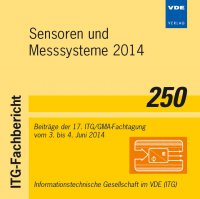Identification and Verification of a Vector Model for Ferroic Materials
Conference: Sensoren und Messsysteme 2014 - Beiträge der 17. ITG/GMA-Fachtagung
06/03/2014 - 06/04/2014 at Nürnberg, Deutschland
Proceedings: Sensoren und Messsysteme 2014
Pages: 5Language: englishTyp: PDF
Personal VDE Members are entitled to a 10% discount on this title
Authors:
Sutor, Alexander; Bi, Shasha; Lerch, Reinhard (Friedrich-Alexander Universitaet Erlangen-Nuernberg, Lehrstuhl fuer Sensorik, Erlangen, Germany)
Abstract:
The quality of numerical simulations decisively depends on the utilized material models and their parameters. Only with appropriate model descriptions, the behavior of components like sensors and actuators can reliably be computed ahead. The physical fields involved in magnetism and piezoelectricity are vector fields. In contrast to that fact, the classical models describing hysteresis of ferroic materials are scalar models. Clearly, the hysteresis of such materials can be precisely modeled only by vector hysteresis models. Therefore, much effort is being put into the development of efficient vector models. For the reason of computational efficiency, models have been developed that differ from the classical Preisach approach and are for example based on rotationally coupled step functions. We have proposed a very efficient Preisach based model before, which we called the rotational vector Preisach model. In this paper, we propose an extension of the rotational switching function, which improves the model characteristics for arbitrary H-field trajectories. We also introduce a set of special vectorial minor loops for the general validation, verification, and comparison of vector models. We apply those H-field trajectories to isotropic materials like sputtered FeCo thin films as used in micromechanical systems. The vectorial minor loops can readily be utilized to evaluate the model output and the results agree well with vectorial measurements.


